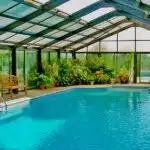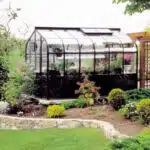If you want to improve your memory performance, attention span and overall cognitive abilities nature is your answer.
The trend towards more human-focused architecture has recognized the connection between people and their environments. More and more new projects are including naturally restorative architecture like:
- Living walls reduce indoor pollutants along with bringing nature into an otherwise contained environment.
- Design that places the structure in sync with the sun’s activities with brighter light in “daytime” activity areas.
- Inclusion of green roofs, which can last up to 80 years.
- Using natural elements that would normally only be on exteriors like stone, reclaimed wood, and natural textures.
- And our favorite – including views of nature through expansive windows, skylights, or glazed structures.
With all the years of working in concrete structures, that offered little to no interaction with the outside world, the new “biophilic” architecture works to improve the well-being of people within their spaces and fosters a stronger connection with the environment.
Why is the natural connection important?
- Interaction with nature nurtures our creativity. The University of Michigan found that just an hour of interacting with nature improved memory and attention by 20%. Structures that utilize biophilic architecture help people become more productive and take less sick time.
- Research conducted in Pennsylvania found that patients who had a view of trees from their rooms had shorter hospitalizations, less need for pain medications, and fewer negative comments.
- Social bonding is increased in natural environments which leads to better collaboration in the workplace and less conflict between students in schools.
- Nature restores peace. It has a natural mental health benefit. Connecting with nature has also been shown to reduce the symptoms of ADHD in children which also has implications for educators.
When it comes to feeling relaxed and calm, research has shown that 90% of people imagine natural settings: waterfalls, trees, gardens, beaches, and the like when thinking of a place to become tranquil.
The trend to include nature as part of architectural design isn’t new. Edward O Wilson popularized the idea in the 1980s. In fact, if you look back to that decade, you’ll notice a trend in the addition of solariums to restaurants and homes. Some of the most established sunroom companies were founded in the 1980s, no doubt as part of the trend to focus on restorative spaces and strengthening the innate attraction to nature.
Buildings are being designed to better facilitate their purpose. Today we’ve seen projects that are going the extra mile to not only include nature but use it to help create buildings that are more energy efficient like the new Toyota North American Headquarters. We’ve noticed that senior living facilities are including more opportunities for residents to interact with nature by including small greenhouses. Some of our favorite projects include a fusion of interior and exterior spaces that give building occupants a stronger connection with natural light, organic materials, and green spaces.
Abraham Lincoln said, “The best way to predict the future was to create it.” While he might not have been referring to architecture, the quote certainly applies. The architectural trend of including nature to nurture building occupants will help create a better future for everyone.
Related Posts
We Like to Hear From You!
We service and support the products we manufacture and install. If you need assistance with
our products or those of another sunroom manufacturer, contact us!





